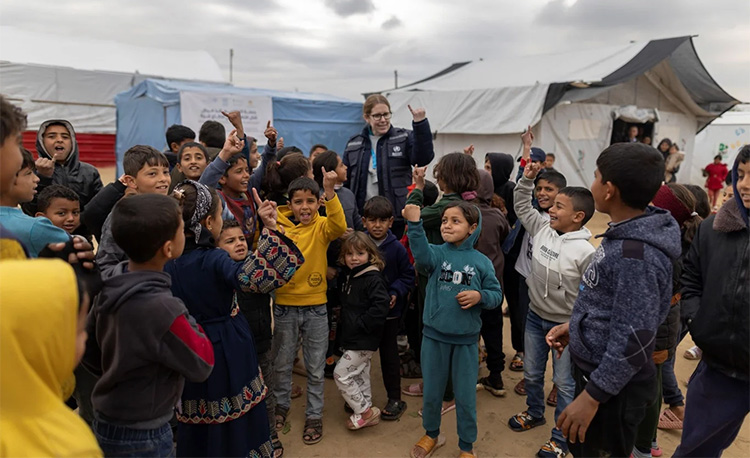

Polio campaign in Gaza Strip reaches around 603 000 children with better access
28 February 2025, Jerusalem/Amman/Geneva – A five-day mass polio vaccination campaign in the Gaza Strip concluded on Wednesday, reaching nearly 603 000 children under 10 years of age with novel oral polio vaccine type 2 (nOPV2) following comprehensive, simultaneous access to all five governorates during the ongoing ceasefire. The campaign was conducted as part of emergency efforts to end an ongoing poliovirus outbreak and prevent further spread in the Gaza Strip.
During this round, an additional 40 000 children were vaccinated as compared to the previous two rounds conducted in September and October 2024, after poliovirus was detected in the Gaza Strip. The ceasefire enabled health workers to reach more children who had missed vaccinations due to displacement during the phased approach, living in areas that previously required special coordination for access, or being unreachable during the October 2024 round due to insecurity in North Gaza, including Jabalia, Beit Lahiya, and Beit Hanoun.
Strong community engagement and awareness of vaccination benefits had maintained high immunization rates in the Gaza Strip, where 89% of children received the third dose of oral polio vaccine in 2023, before the conflict. This round drew upon 1660 vaccination teams, 1242 of which were mobile, and deployed 1242 social mobilizers. Despite bad weather conditions, families welcomed the initiative and brought their children to points where they could receive the polio vaccine.
The campaign was conducted by the Palestinian Ministry of Health and implemented with support from the World Health Organization (WHO), the United Nations Children’s Fund (UNICEF), the United Nations Relief and Works Agency for Palestine Refugees (UNRWA), and other partners.
As part of the Global Polio Eradication Initiative’s commitment to mount a robust poliovirus outbreak response, surveillance for disease in children and for virus circulation in the environment has also been intensified since July 2024. It was this timely surveillance that detected ongoing environmental circulation of the virus, and the need to conduct additional vaccination to protect children.
As the ceasefire provides an opportunity to resume critical public health functions, working to recover Gaza’s previously strong disease surveillance and routine immunization are the best ways to protect children from polio and other vaccine-preventable diseases. Ending polio hinges on fully vaccinating every last child with polio vaccines. Ensuring uninterrupted access to safe water, sanitation and hygiene, and proper nutrition will protect children from many diseases including polio.
WHO, UNICEF and partners continue to call for a lasting ceasefire that leads to long-term health and peace.
- Original Story:
- Story By:
- Date:
- Please Support: